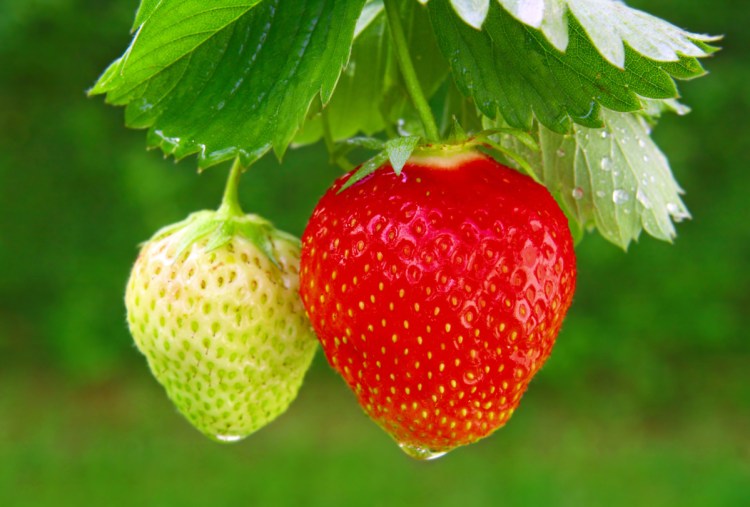Strawberries are perennial. In theory, you should be able to plant them once and enjoy them for the rest of your life. It hasn’t worked out that way for me.
The University of Maine Cooperative Extension says beds last three to five years if well maintained. My wife Nancy and I have gone a bit longer than that, but we might be counting differently.
You pull the blossoms off the strawberry plants and get no fruit the first year. You do this so the energy goes into overall plant health and growing runners. The second year, you get some berries, but the crop isn’t bountiful. The third season is peak production, and it fades for a few years after that.
Our vegetable garden was a hayfield when we first created it, but Nancy’s family lore says it was once a strawberry field. That would make sense, because the plot fits all of the Cooperative Extension’s recommendations, according to a bulletin written by David Handley.
It has deep, sandy loam with a good amount of organic matter; it is well drained and it has a slight slope, which allows heavier cold air to flow away, preventing frost damage.
Although it is possible to grow strawberries from seed, it isn’t worth the effort. We are planting a new bed this year, and we ordered 50 plants for $20 from Fedco, which saves a lot of work.
You should plant strawberries as soon as the soil can be worked, digging a hole deep enough to cover half the crown and wide enough that you can spread the roots. Plants should be about 18 inches apart and rows, if you are doing more than one, 4 to 5 feet apart. Then fertilize with a balanced fertilizer.
We ordered Sparkle, a tradition in Cape Elizabeth and in Nancy’s family. It is the best-tasting berry I’ve ever had. It is soft, so it doesn’t travel well, and smaller than average, getting even smaller late in the season and as the bed gets older.

You’ve made your bed – now wait several seasons for peak berry production.
If I can find about a dozen Earliglow plants – I don’t want a full 50 – I will plant some of those as well, because they would give us berries earlier than our mid- to late-season Sparkles.
Other varieties the Extension recommends for Maine include Wendy, Cavendish, Jewel and Allstar.
During the second year of a strawberry bed’s life, it will begin sending out runners, making your row wider. Ideally the row should be no more than three feet wide, so you can reach the berries in the middle without stepping on the not-quite-ripe berries.
With the current bed, I wasn’t paying attention, and it got to be about 6 feet wide at the end of the season. I went through the middle of that too-wide row with a broadfork – a manual tool I use instead of a rototiller – and ended up with two narrow rows instead of one wide one. Production lasted about four years after that.
If you have a strawberry bed already and want to save money, you can cut off some runners in late July through August and plant your new strawberry bed that way. When a runner leaves your main bed, fasten it to the ground with a U-shaped pin, perhaps made by cutting up metal clothes hangers. When you can tell the new plant has a good root system, dig it up and plant it in your new row.
You should mulch your strawberry beds in winter so that cycles of freezing and thawing don’t damage the plants. Straw is often recommended, but our neighbor has pine trees and the needles blow onto our yard, so I use those – sometimes supplemented with oak leaves. In early April, rake the mulch off and leave it between the rows.
After a bed gets old, you can renovate it at the end of the season. Put your lawn mower on its highest setting and mow off the strawberry leaves, making sure not to damage the crowns that are the center of the plant. Add about a half an inch of soil – we use compost from our bins, which includes a lot of soil – without covering the crowns. Then use a spading fork, broadfork or – if you insist – a rototiller to narrow the rows to about 18 inches. Then weed, which for our bed mostly means removing violets, and fertilize.
This column has been about traditional strawberries, which produce berries in June and early July. People in Maine also can grow ever-bearing strawberries and day-neutral strawberries. Ever-bearing strawberries, which have been sold for decades, produce a crop of strawberries in June and another in late August or September. Day-neutral strawberries, which I first learned about 10 years ago, produce a few strawberries regularly throughout the growing season.
I can’t recommend either. Neither is as prolific as the traditional strawberries, nor sends out many runners. Second, the spotted-wing drosophila has arrived in Maine, and attacks fruits beginning about in mid-August. So, fruit later in the season would be susceptible.
Besides, I’m a traditionalist. Strawberries should be eaten in early summer, with a feast of strawberry shortcake on the Fourth of July. We have raspberries, blueberries and, I hope, peaches for later in the summer.
TOM ATWELL is a freelance writer gardening in Cape Elizabeth. He can be contacted at: tomatwell@me.com.
Send questions/comments to the editors.



Comments are no longer available on this story